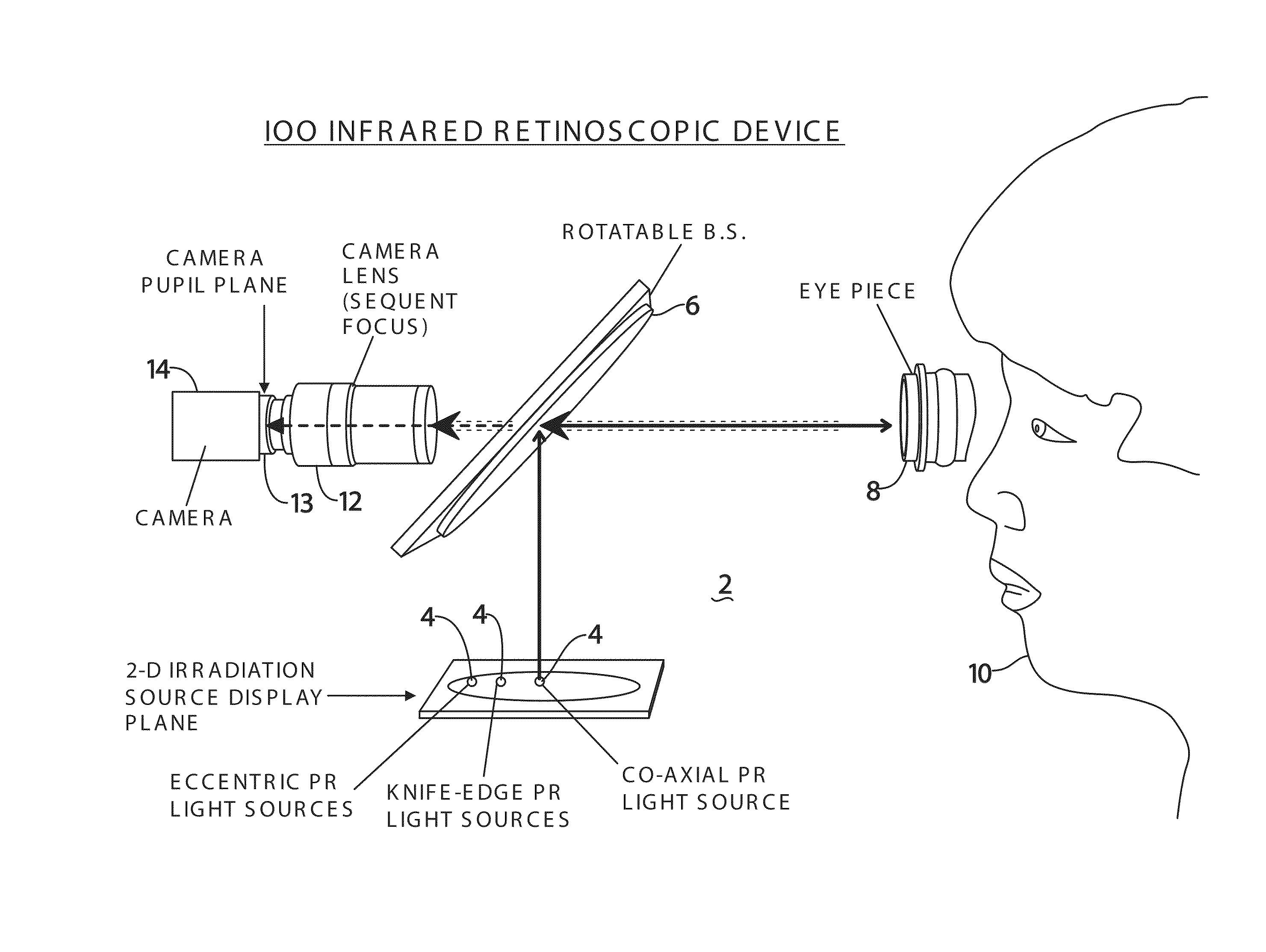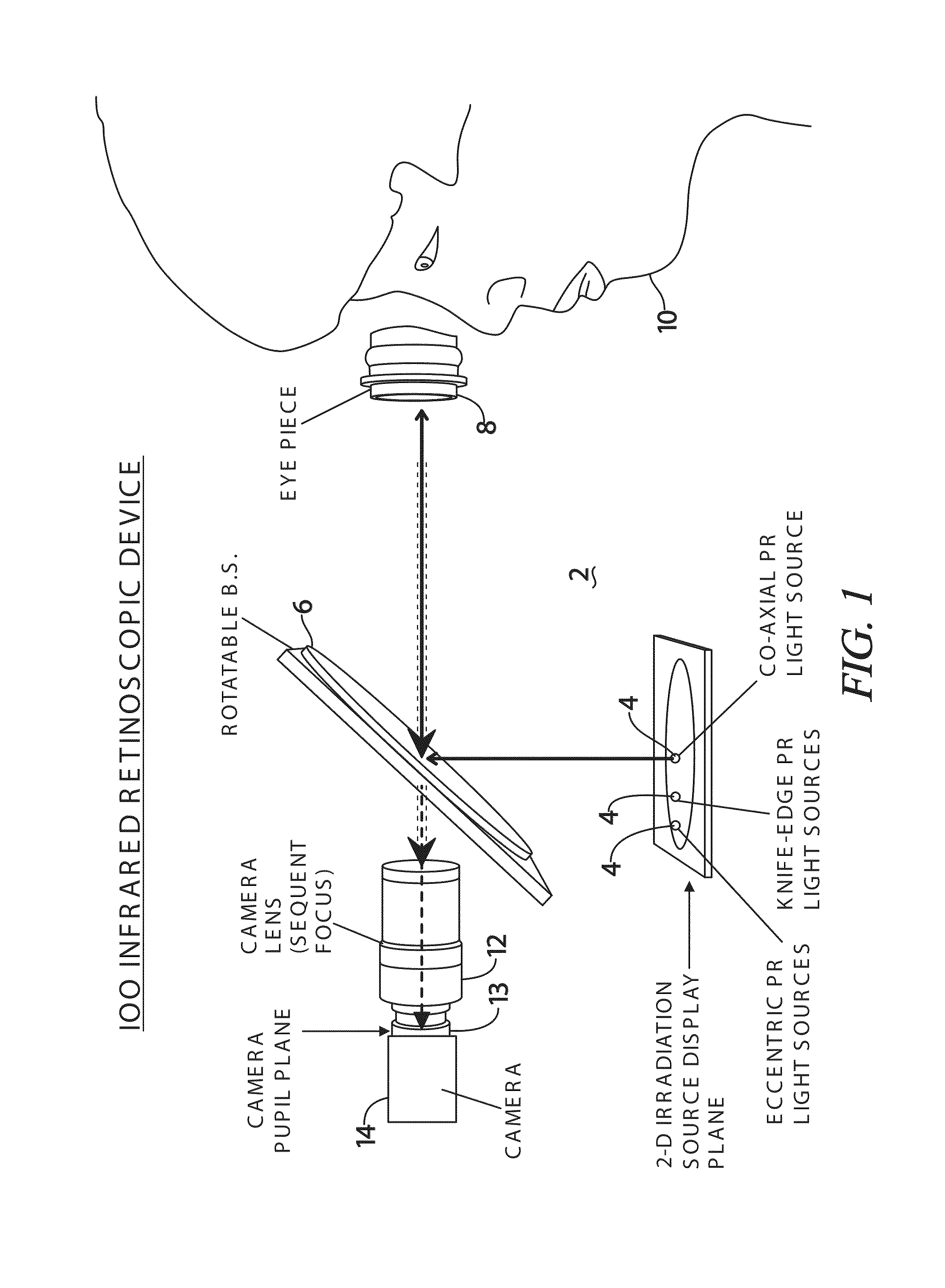Adaptive infrared retinoscopic device for detecting ocular aberrations
a technology of retinoscope and infrared light, which is applied in the field of providing medical ocular assistance and examination, can solve the problems of limited treatment options, limited clinical screening opportunities, and limited advantages of mild or early stage kc, form fruste keratoconus (ffkc),
- Summary
- Abstract
- Description
- Claims
- Application Information
AI Technical Summary
Benefits of technology
Problems solved by technology
Method used
Image
Examples
Embodiment Construction
[0023]A multi-axis infrared photorefractive retinoscope constructed in accordance with an embodiment of the present invention combines simple hardware with smart software control and smart design to provide improved detection of ocular aberrations. In the present invention, photorefraction is accomplished by delivering an infrared light beam into the eye of a patient where it is bent by the ocular properties of the eye, hits the retina, and then reflects back to the camera and is detected as an image. The light is directed into the eye so that it is naturally focused to a point on the patient's retina by the eye's cornea and crystalline lens so that the photorefractive image received and produced by the camera is not an image of the surface of the retina. Rather, the photorefractive image is an image of the retinal reflex which appears on the pupil plane. This pupil image appearance depends upon the ocular properties of the eye, not the appearance of the retina itself.
[0024]An optim...
PUM
 Login to View More
Login to View More Abstract
Description
Claims
Application Information
 Login to View More
Login to View More - R&D
- Intellectual Property
- Life Sciences
- Materials
- Tech Scout
- Unparalleled Data Quality
- Higher Quality Content
- 60% Fewer Hallucinations
Browse by: Latest US Patents, China's latest patents, Technical Efficacy Thesaurus, Application Domain, Technology Topic, Popular Technical Reports.
© 2025 PatSnap. All rights reserved.Legal|Privacy policy|Modern Slavery Act Transparency Statement|Sitemap|About US| Contact US: help@patsnap.com



